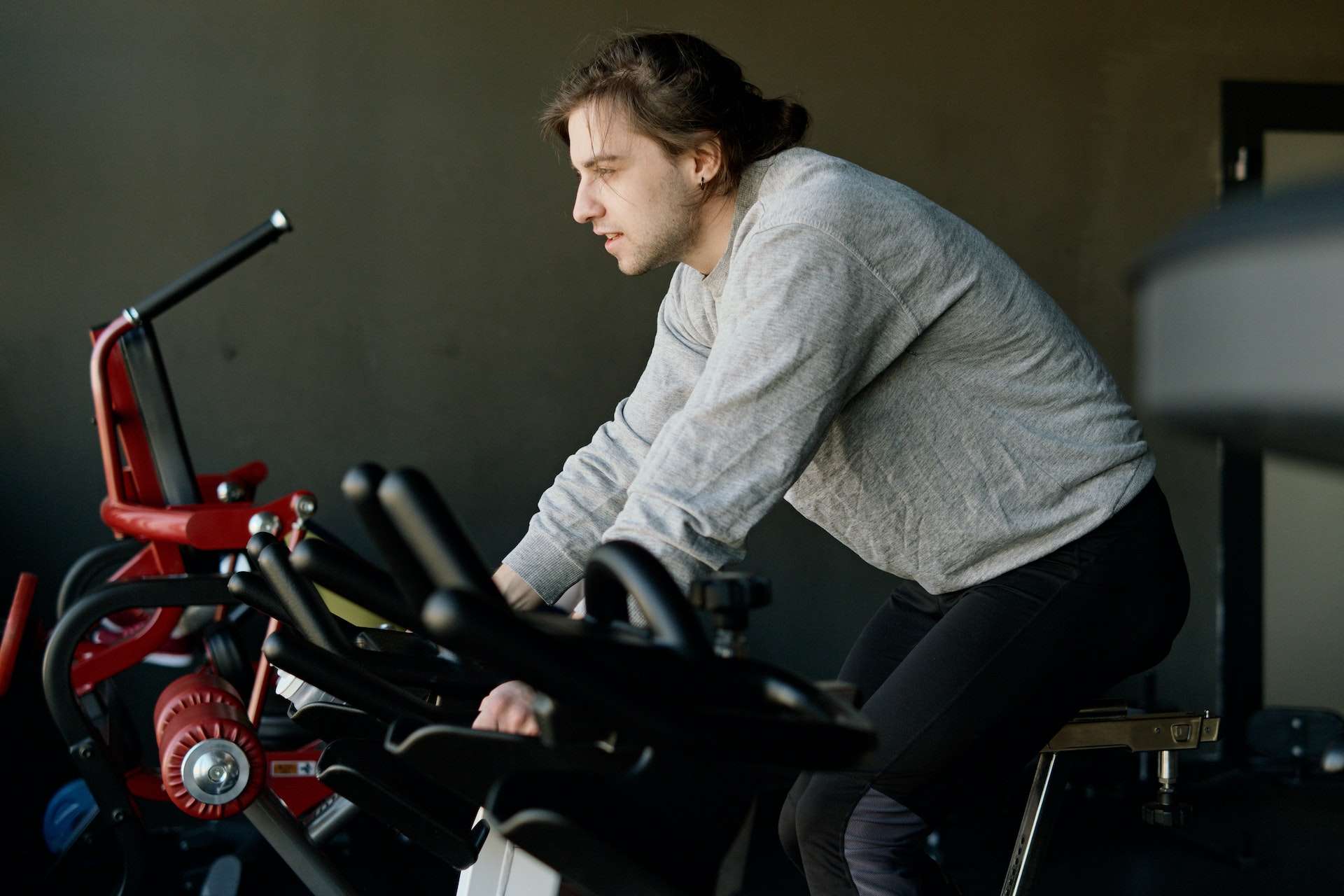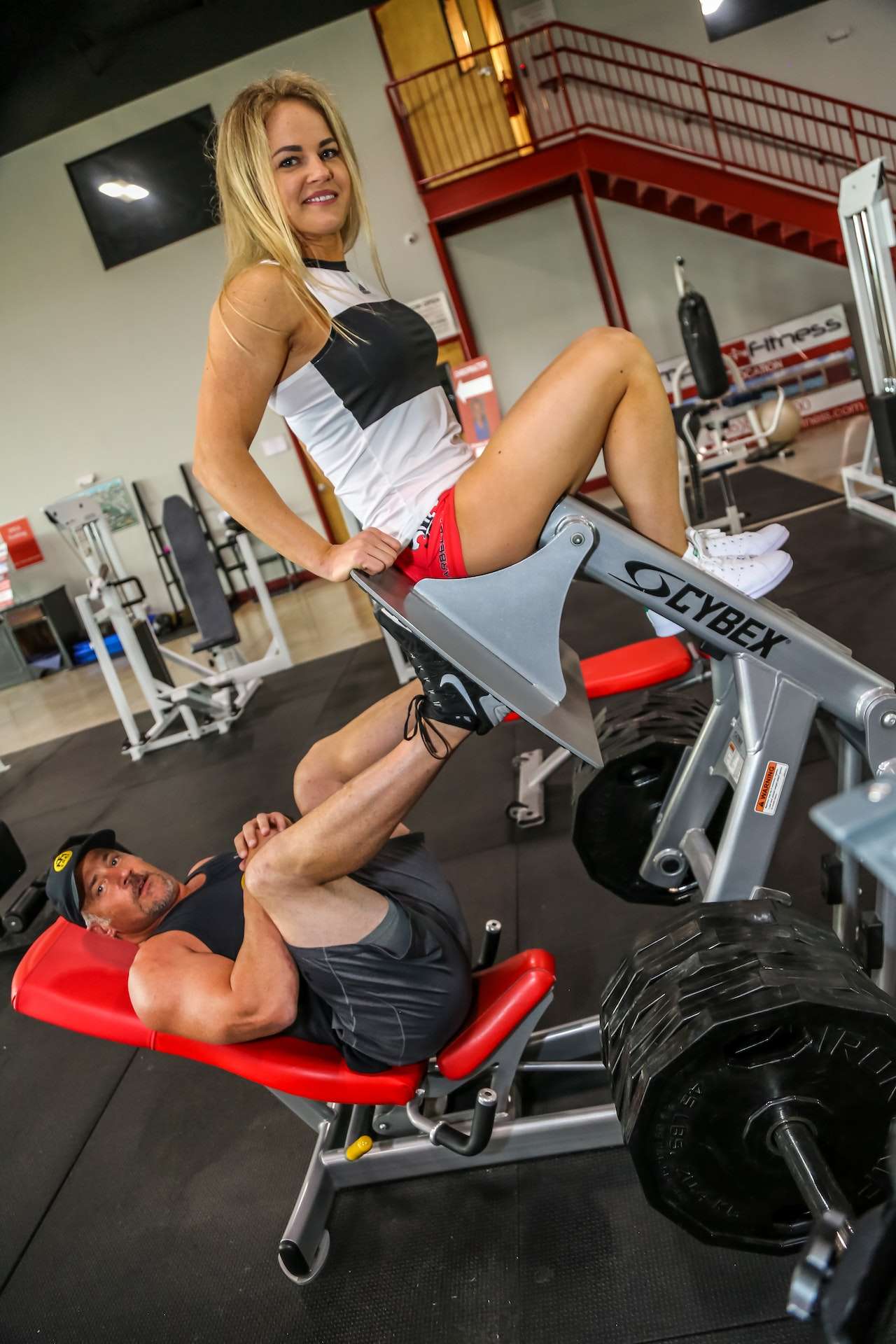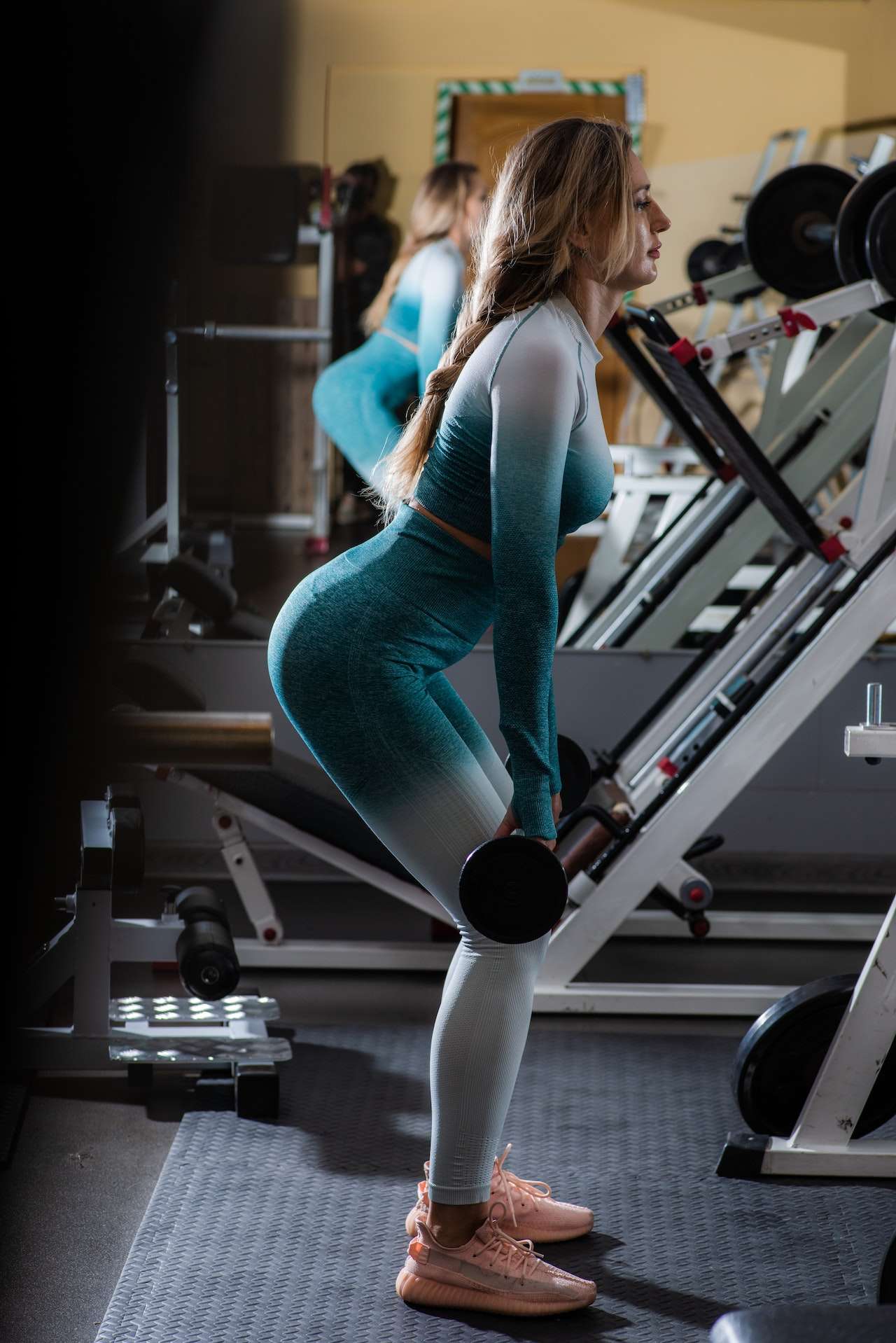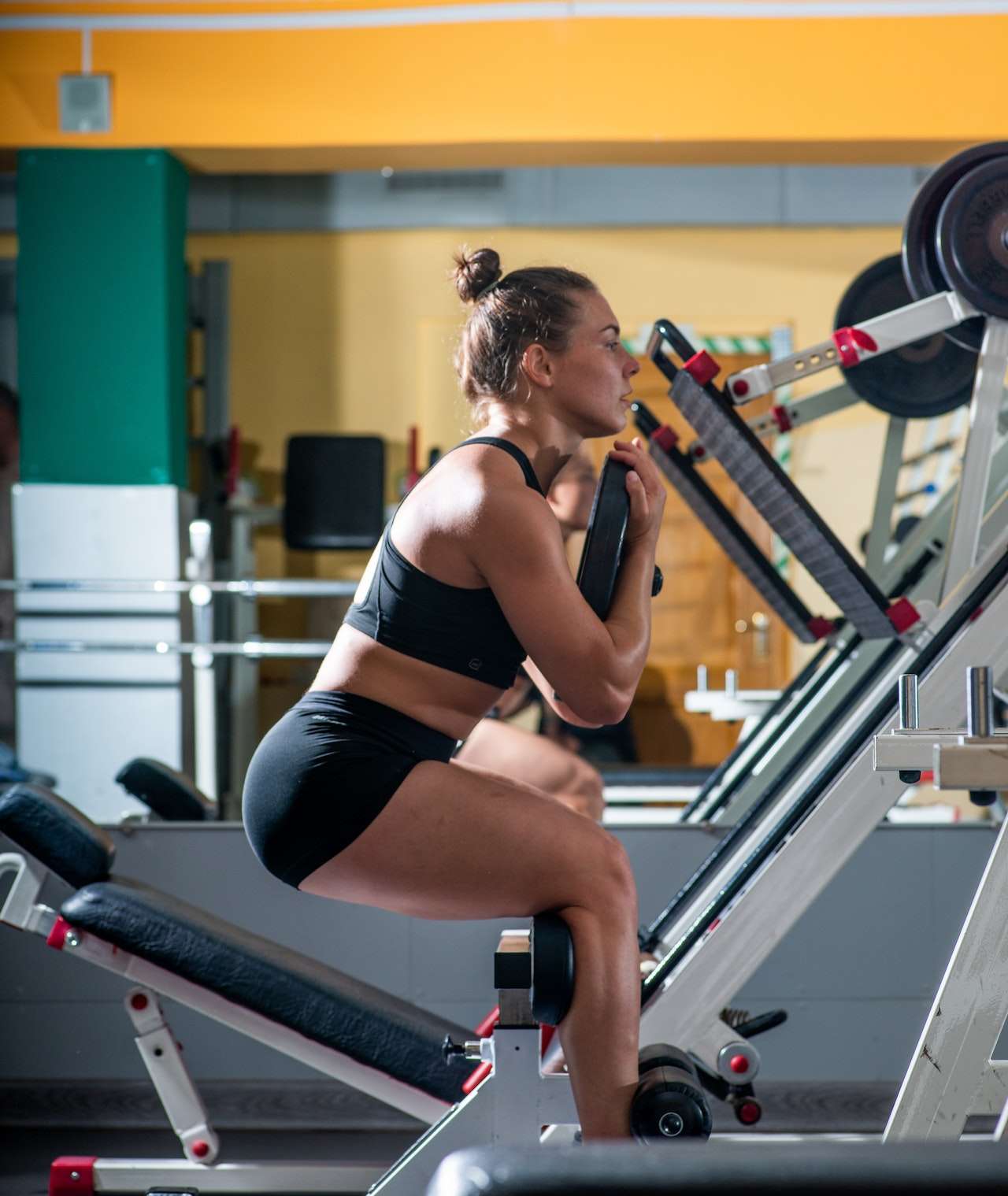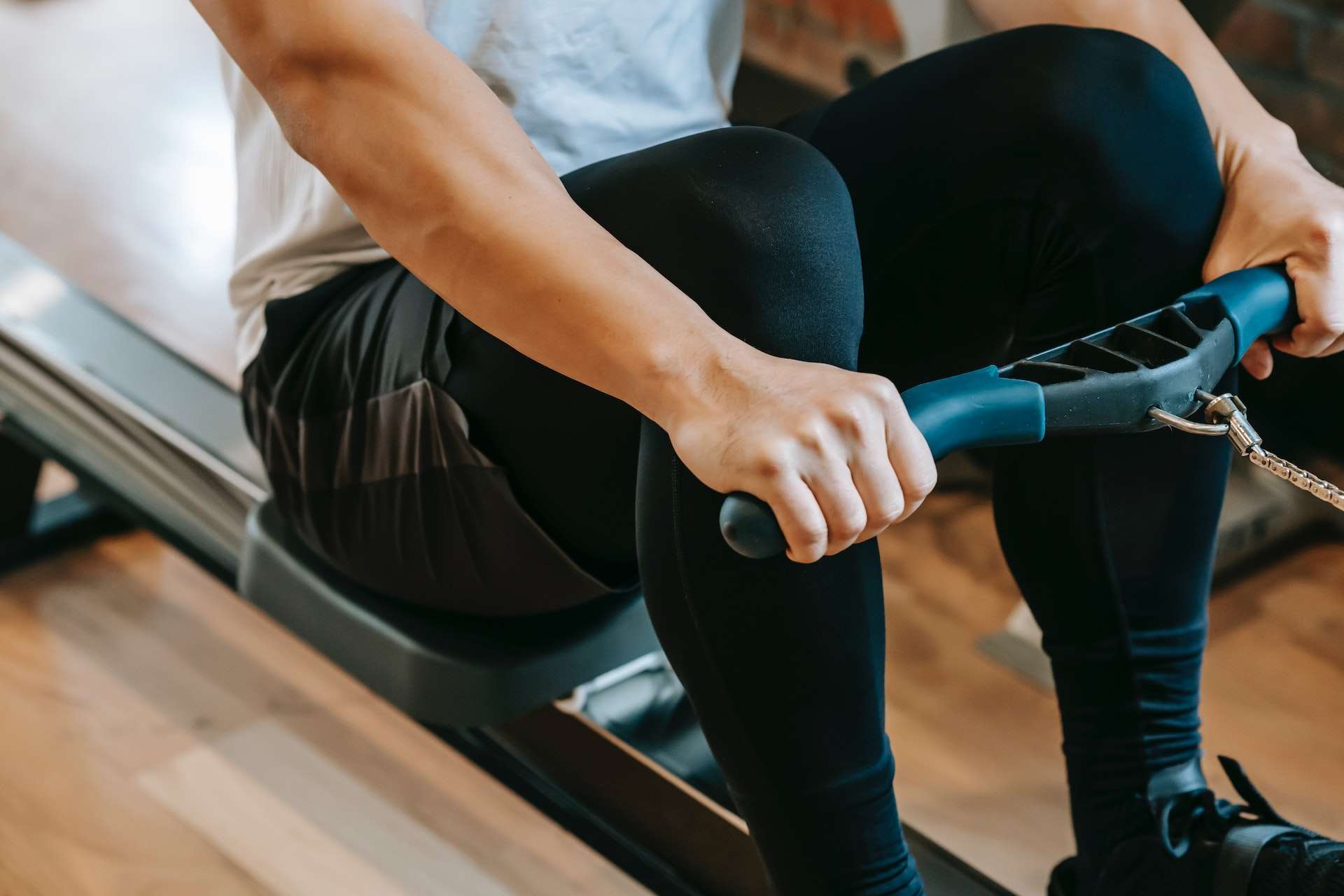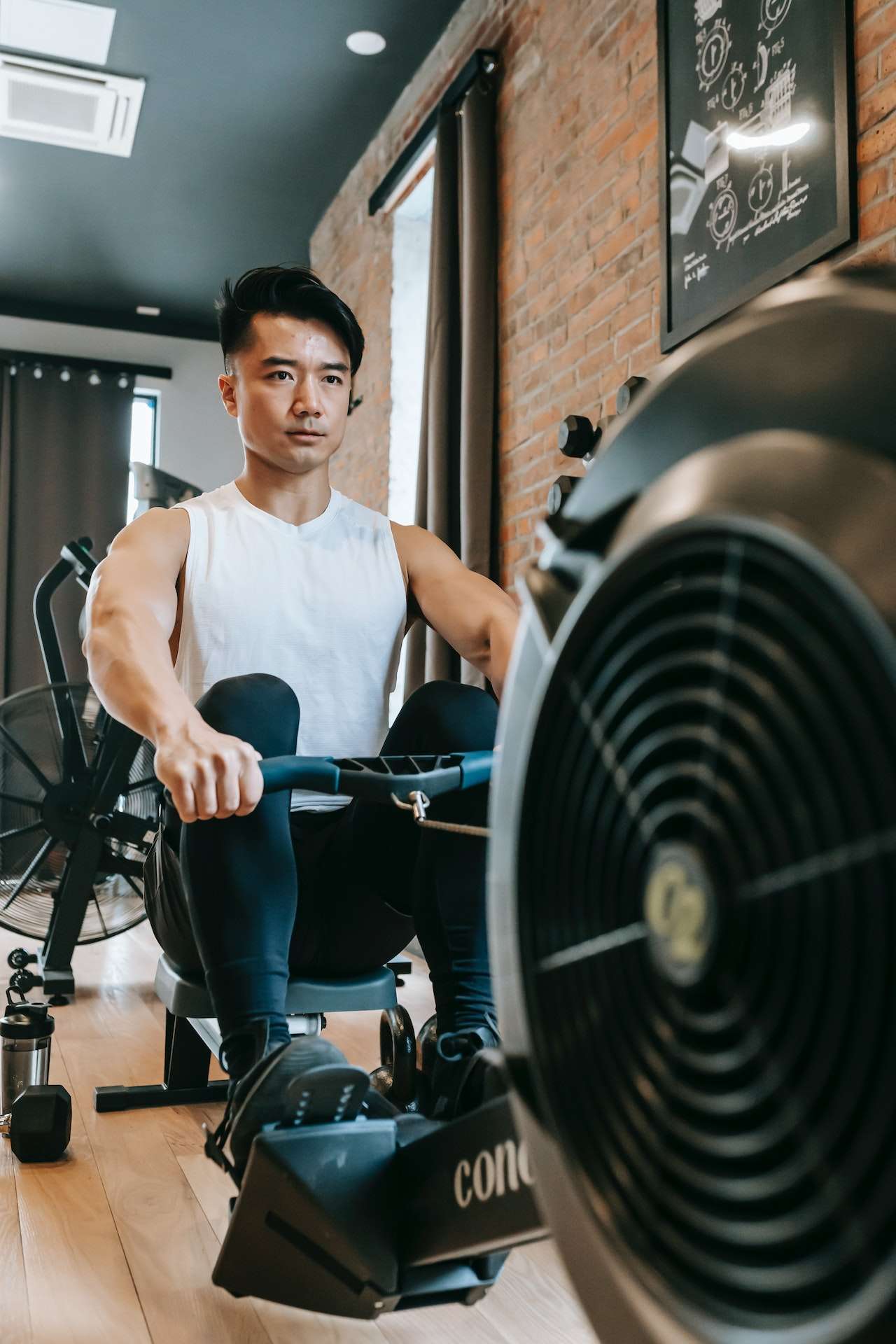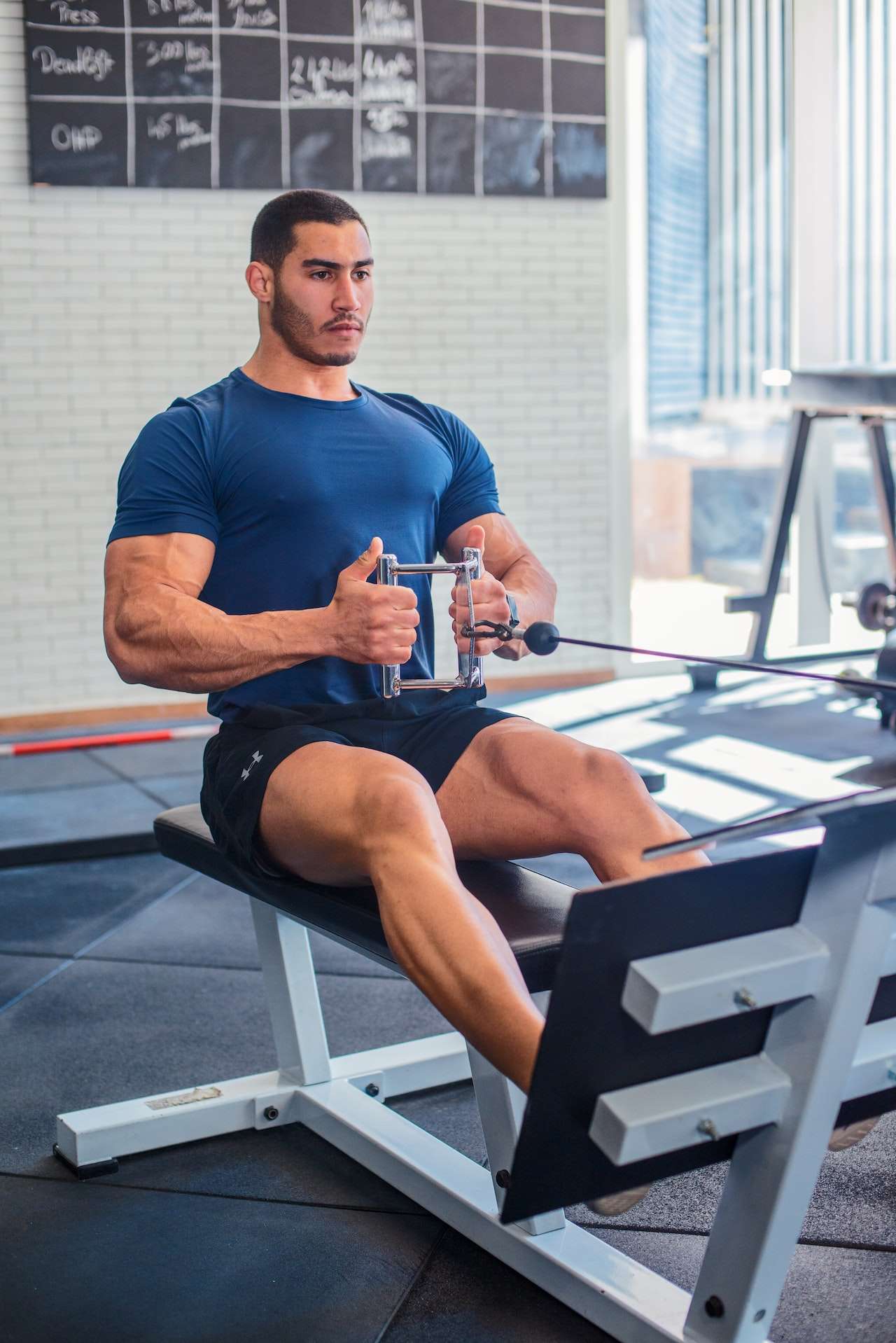|
Hey there! Are you looking to get the most out of your leg workouts? Well, you’ve come to the right place! This article will explore how many sets and reps of body weight leg exercises should be performed for maximum results. You might already know that exercising is essential to staying healthy and fit. But did you know that there are specific amounts of sets and reps that can help you get the most out of your workouts? It’s true! The trick is knowing which amounts work best for your unique needs.By understanding how many sets and reps are appropriate for each exercise, you can maximize your efforts in the gym and achieve the results you’re after. So don’t worry if you’re overwhelmed by all the choices – we’ve covered everything here! Learn more about maximizing your leg workout performance with sets and reps.
Table of Contents
show
Understanding Sets And RepsHave you ever felt like running a race without knowing how to warm up? That’s what it’s like trying to do bodyweight leg exercises without understanding sets and reps. It’s like trying to run a race without knowing how far you must go or how fast you need to run. Sets and reps are essential for getting the most out of your bodyweight leg exercises. A set is a series of repetitions you do in succession, usually with breaks between them. So if you wanted to do twenty squats, each set would consist of those twenty squats done in one session. Repetitions refer to the number of times you complete a specific exercise within each set. So if you did twenty squats, then each repetition would be counted when you repeat those same twenty squats. The number of sets and repetitions performed for maximum results will depend on the bodyweight leg exercise and your fitness level.
If you’re starting with bodyweight exercises for legs, start with fewer sets and reps and work your way up as your strength increases. For example, three sets of ten reps is an excellent place to start if you’re doing bodyweight squats. As your strength improves, so should the number of sets and reps you do to keep challenging yourself and ensure continued progress. It can be challenging at first, but once you understand how many sets and reps are needed for each particular bodyweight leg exercise, the real progress begins! With this knowledge, let’s discuss some excellent bodyweight leg exercises for beginners… Body Weight Leg Exercises For BeginnersBodyweight leg exercises for beginners are a great way to start your journey toward solid and toned legs. Whether you want to increase muscle mass, gain strength, or tone up, bodyweight leg exercises can help you reach your goals. Here are some of the best bodyweight exercises for leg strength and endurance:
These bodyweight exercises will help you build muscle mass, increase strength and endurance, and tone up quickly without lifting heavy weights or using expensive gym equipment. With consistent practice and progressive overload (increasing difficulty over time), you’ll be able to reach all of your fitness goals! The Importance Of Progressive OverloadProgressive overload is crucial in bodyweight leg exercises and achieving maximum results. Whether you’re just getting started with bodyweight leg workouts or you’ve been at it for a while, progressive overload is essential in ensuring your activities are practical. To achieve the best results from bodyweight leg exercises such as squats, lunges, step-ups, and calf raises, you need to constantly push yourself by increasing intensity or reps. The idea behind progressive overload is gradually increasing the difficulty of the exercise over time. For example, if you are doing squats with your body weight, you may start doing ten reps with good form and add five more each week until you reach 20 reps.
You can also increase the intensity of your bodyweight leg workout by adding variations such as single-leg squats or pause squats. Or add weight, such as a backpack or dumbbells, while performing the exercises. By progressively overloading your muscles, you can get stronger and build muscle without lifting heavy weights in the gym. By consistently challenging yourself through progressive overload and pushing past your comfort zone with bodyweight leg exercises for strength, you can see more significant gains in strength and muscle mass over time which will help lead to maximum results from your hard work! Recommended Set And Rep Ranges For Body Weight Leg ExercisesBody weight exercises are an excellent choice if you’re looking to maximize your leg workouts. From beginners to advanced lifters, incorporating bodyweight leg exercises into your routine is a great way to strengthen and build muscle mass. You can increase strength and size with the right set and rep ranges while achieving maximum results. Regarding bodyweight leg exercises, various compound movements can be used for strength and mass gains. For instance, squats and lunges are great for building leg muscles, while plyometric jumps can help develop power and explosiveness. For beginners, lower rep ranges with more rest between sets are recommended. This allows the trainee to progress safely without risking injury or fatigue. On the other hand, those looking to build mass may want to use higher rep ranges with shorter rest periods to fully tax the muscles. No matter what level of fitness you’re at or what goals you have in mind, bodyweight leg exercises can be adapted accordingly. From compound bodyweight exercises with no equipment, like jump squats or Bulgarian split squats, to using dumbbells or resistance bands for more advanced moves like single-leg deadlifts or lateral lunge walks, there’s something for everyone! It’s important to remember that progressive overload should be applied over time as you become stronger and more conditioned so you keep challenging your body for optimal results. So start incorporating these bodyweight leg workouts today and watch your legs grow stronger than ever! How To Incorporate Body Weight Leg Exercises Into Your WorkoutIncorporating bodyweight leg exercises into your workout routine is a great way to build strength and improve fitness. Whether you are a beginner, an experienced bodybuilder, or someone looking for low-impact options, plenty of exercises can help you achieve optimal results. The best bodyweight leg exercises will vary depending on your goals and preferences. However, some of the most popular include bodyweight squats, lunges, calf raises, step-ups, glute bridges, and single-leg squats.
Each exercise targets different leg muscles and benefits overall leg strength and mobility. For beginners or those looking for low-impact options, bodyweight exercises such as wall sits or mini squats can effectively build muscle while avoiding injury or strain. If you’re familiar with bodybuilding techniques, consider adding plyometrics and weighted exercises such as jump squats or deadlifts to increase intensity levels. Regardless of which type of exercise you choose, remember to incorporate proper form when performing any bodyweight movement to ensure safety and maximize results. No matter what your fitness level is, there are plenty of body weight leg exercises that can help you reach your goals. Now it’s time to explore common bodyweight leg exercises and their benefits to determine which ones work best for you! Common Body Weight Leg Exercises And Their BenefitsI’m sure you’ve heard it before – bodyweight leg exercises are essential to any workout. But what kind of bodyweight leg exercises should you do for maximum results? What benefits do these exercises offer, and how can they help you reach your goals? In this section, I’ll briefly overview some joint bodyweight leg exercises and their benefits so you can easily incorporate them into your workout. First, look at some popular bodyweight leg exercises: – Squats: Strengthens the quadriceps muscles in the front of the thigh and the calves and glutes. – Lunges: Improves balance and stability while strengthening both quads and glutes. – Step Ups: Increases muscular endurance in both legs while strengthening hamstrings and calves. – Calf Raises: Strengthens calf muscles for improved jumping power and balance. These bodyweight leg exercises will help build strength, stability, power, and endurance to perform better in other activities such as running or sports. They can also help improve posture by strengthening your core muscles. Plus, because these exercises are low impact, they’re suitable for people of all ages and fitness levels! Each exercise should be performed for several sets and reps to maximize results – but more on that later. Remember that rest is just as important as exercise when achieving physical fitness goals. That’s why it’s important to consider the role of rest and recovery in bodyweight leg training… The Role Of Rest And Recovery In Body Weight Leg TrainingThe role of rest and recovery in bodyweight leg training is often overlooked, yet it’s essential for achieving maximum results from your workout. Resting and recovering will ensure your hard work is well-spent as you build leg muscle with bodyweight exercises. The irony of the situation is that most people need to realize how important rest is for building muscle and strength. It would help to have an effective plan to incorporate rest and recovery into your bodyweight leg workout regime.
Here’s how to do it: 1. Take a break between sets – Taking a break between sets allows the muscles to recover and helps reduce the risk of injury. It also gives you time to catch your breath and mentally prepare for the next set. 2. Refrain from overtraining – Overtraining can lead to fatigue, burnout, and even injury if you fail to give your muscles adequate time to rest and recover after each session. 3. Get enough sleep – Getting enough is vital for any physical activity, especially regarding bodyweight leg exercises like squats or lunges. 4. Eat nutritionally balanced meals – It provides your body with the nourishment it needs for optimal performance during workouts, which helps with quicker recovery times between sets or sessions. Rest days are just as important as working out days when making gains with bodyweight exercises like squats, lunges, step-ups, etc. Taking the necessary steps to incorporate rest days into your routine will ensure that you maximize progress while minimizing injury risk. Without proper rest and recovery, no amount of weight-bearing or weight-lifting exercises can help build your desired toned legs! Now let’s move on to discuss the role of nutrition in body weight leg training… The Role Of Nutrition In Body Weight Leg TrainingNutrition is a crucial component of any bodyweight leg training program. Ensuring you’re getting the right fuel for your workouts to maximize your results and get the most out of each exercise is essential. Proper nutrition helps ensure your body has enough energy to perform the exercises correctly and maintain good form. With it, you can get the most out of your leg exercises. The best way to ensure proper nutrition during bodyweight leg training is by eating a balanced diet that includes lean proteins, carbohydrates, healthy fats, and plenty of fruits and vegetables. Eating smaller meals throughout the day helps maintain energy levels and keeps your metabolism at an optimal level. Additionally, it’s essential to stay hydrated throughout your workouts, as this will help keep your muscles nourished and ready for more intense exercises. Regarding snacks before or after a workout, it’s best to avoid sugary and processed foods as they can cause spikes in blood sugar levels, leading to fatigue during workouts. Instead, choose nutritious options like nuts, seeds, fruit smoothies, or yogurt, which provide long-lasting energy and essential vitamins and minerals. By following these simple nutrition tips, you’ll be able to get the most out of every bodyweight leg exercise you perform! How To Avoid Common Mistakes In Body Weight Leg TrainingTraining your legs with bodyweight exercises is a great way to build strength without costly gym equipment. But if you want maximum results from your bodyweight leg workout, avoiding common mistakes is essential. Here are four tips for getting the most out of your bodyweight leg exercises: 1. Prioritize Compound Movements: When planning your bodyweight strength training legs, prioritize compound movements like squats, lunges, and step-ups. These exercises use multiple muscle groups at once and will help you get the most out of your workouts in less time. 2. Master the Basics: Before trying advanced variations of bodyweight exercises for leg mass, ensure you have mastered the basics first. Learn how to perform each exercise with the correct form before increasing weight or reps. This will ensure that you don’t injure yourself while achieving maximum results.
3. Incorporate HIIT: Incorporating high-intensity interval training (HIIT) into your bodyweight leg workout can help you build strength quickly and efficiently. Add short bursts of intense activity between sets of more traditional bodyweight exercises for strength, such as burpees or jump squats. 4. Track Progress: Tracking progress is key in any fitness routine, including a bodyweight leg workout pdf or other easy bodyweight leg workout plan. Keep track of how many reps and sets you do each day so that you can monitor your progress over time and adjust the intensity accordingly. By following these tips, you can maximize the effectiveness of your bodyweight leg exercises for hamstrings and get the most out of every workout session! The next step is learning how to incorporate these workouts into a busy schedule so that they become part of an effective long-term fitness plan… How To Incorporate Body Weight Leg Exercises Into A Busy ScheduleMaking time for bodyweight leg exercises can seem like a challenge in a busy schedule, but with a few adjustments and the right mindset, it’s possible to make it happen. After all, as the saying goes, ‘Where there’s a will, there’s a way.’ Here are some tips to help you incorporate bodyweight leg exercises into your routine: First, create an achievable plan that fits your lifestyle. You don’t have to hit the gym daily – two or three times a week is enough for bodyweight leg exercises at home. Think about compound bodyweight exercises like squats and lunges that combine multiple muscles and efficiently use your time. Second, get creative with what you have available to you. If you don’t have access to any equipment, no problem – plenty of easy leg exercises without equipment will still give excellent results. Try things like single-leg hops and box jumps if you need some ideas. Finally, set realistic goals. When it comes to body weight leg workouts – whether for strength or speed –, be sure to focus on quality rather than quantity and push yourself hard enough so each session feels challenging yet achievable. This will help keep motivation levels high and ensure you keep up your routine over the long term for maximum results! Body Weight Leg Exercises For Advanced TraineesThe journey can be challenging to build strength and power in our legs. But we can achieve maximum results with the right exercises, an intense bodyweight leg workout, and determination. Compound bodyweight leg exercises are one of the best ways to increase strength without weights. They also provide an intense full-body workout that targets multiple muscle groups at once – perfect for runners looking for a challenge. The most brutal bodyweight leg exercises are lunges, squats, and step-ups. Lunges target your quads, hamstrings, and glutes while also helping to improve balance and stability. Squats are ideal for strengthening the lower body while improving core stability. Finally, step-ups are great for developing power in your legs by engaging the quads, glutes, and hamstrings at various angles.
In addition to these compound exercises, other great bodyweight leg exercises can help you reach peak performance levels. Bodyweight leg extensions focus on developing single-leg strength. In contrast, the best leg and lower body workouts involve multi-joint movements such as burpees and bear crawls, which engage various muscles simultaneously to build overall strength and endurance. Best bodyweight exercises for strength include mountain climbers, bridges, and wall sits, which help build explosive power in the lower body and strengthen core muscles through isometric holds. For an advanced training program incorporating all these exercises into one session, you must consult a professional trainer who can assess individual needs and create an effective routine tailored to you. With regular practice of compound leg exercises lists, such as lunges, squats, step-ups, bridges, and wall sits, along with daily cardio sessions like running or cycling, plus the best leg strength exercises without weights. Such as mountain climbers or burpees – you’ll be well on your way towards achieving maximum results from your bodyweight leg workout for runners! Conclusion:It is important to remember that while sets and reps are essential in achieving maximum results with bodyweight leg exercises, they are not the only factor. The type of exercise, training frequency, and nutrition role are all equally important. Training innovation is critical to success. Just like a carpenter needs the right tools for the job, you need to find the right combination of sets, reps, and exercises for your body. Think about it like a puzzle: try combinations to find the best. And just like any journey, consistency is critical. You will only achieve your goals after a while – it’s a long road filled with small successes and failures. But if you keep pushing forward with dedication and enthusiasm, like a marathon runner aiming for the finish line, you will eventually reach your destination. |
